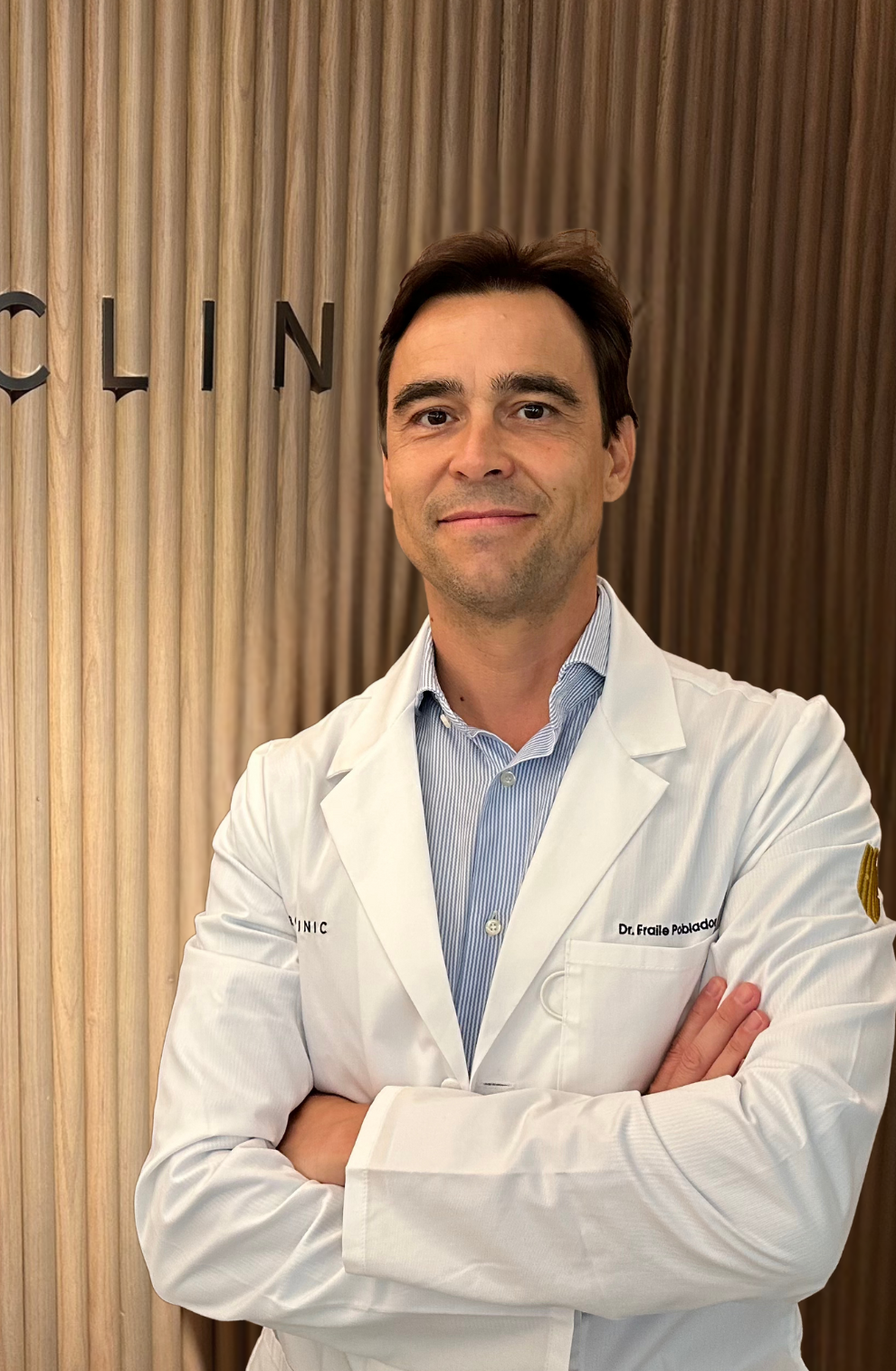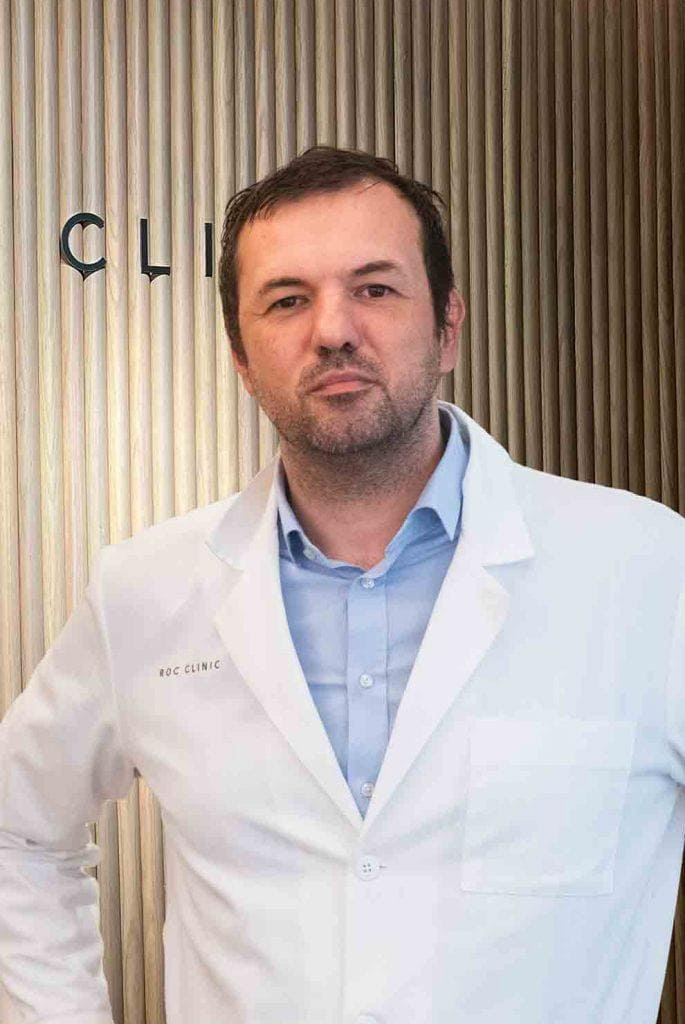Treatment Penile Incurvation
To treat penile incurvation we have to differentiate between active and stable phase.
Although it was usually recommended to wait until the stable phase to establish the severity of the problem and proceed to surgery, in the active phase treatments can be considered to limit the extent and sequelae of the fibrous plaque.
- Super-specialized urologists
- Personalized treatment
- Minimally invasive approach
- More than 16,000 patients successfully treated
Treatments and Technology
The treatment of Peyronie's disease should be separated according to the stage of the disease. During the active phase, treatments aimed at slowing the progression of the disease and reducing the appearance or intensity of complications can be applied. These treatments include:
- Oral medications: phosphodiesterase-5 inhibitors have been shown to decrease the size of fibrosis and, in some patients, to decrease pain. In addition, they have the main effect of improving erection, both during REM sleep and during sexual intercourse. They have a very good safety profile and are a very safe option for most men with Peyronie's disease in the active phase. Among this type of drugs, due to their half-life, the best alternative is the use of tadalafil 5mg daily.
- Penile extender: Penile traction therapy is the treatment of choice in the active phase to try to counteract penile incurvation and shortening. It is necessary to use it for a minimum of hours per day, and it is usually combined with other treatments. However, we know that it is effective in attacking two important complications of Peyornie's disease, namely penile incurvation and penile shortening.
- Low intensity shock waves: they are analgesic and improve erection. They allow "turning off" the pain of the active phase, while improving erection due to their angiogenic effect. In some studies they improve incurvation, although this is controversial. Several shock wave sessions are necessary to dull the pain and improve blood supply.
- Intraplaque treatment: injection of substances with collagenase activity into the fibrous plaque is a very effective alternative to counteract penile incurvation. Collagenase (xiapex), interferon-alpha-2B and verapamil have been used with varying results. Generally speaking, treatment with the first two is very effective and safe, with the third possibly being less potent in improving penile incurvation. In some scientific works we see that the use of collagenase has an efficacy in the form of a reduction in incurvation of 10º for each injection of treatment.
Our group has extensive experience in the multimodal treatment of Peyronie's disease in the active phase, with the intention of avoiding as much as possible the appearance of complications, and limiting their effects in case they appear.
In the event that multimodal conservative treatment has no effect and the disease progresses, surgery is the best treatment alternative in the stable phase. The indications for surgery arise when there is a significant incurvation that prevents or hinders sexual intercourse, the presence of significant erectile dysfunction in stable phase or the patient's preference.
There are several types of interventions, each with its own indications, pros and cons. The main operations for the treatment of Peyronie's disease are:
- Plication: it is the simplest and most conservative surgery. It is a matter of reducing the length of the long side of the penis by means of the application of counter-traction stitches. There are several variants described, all aimed at "straightening" the penis with the least possible aggression. The complication rate is very low, but the main side effect - which is very important for most men - is penile shortening, which is usually between 2 and 3 cm. The greater the degree of curvature, generically the greater the shortening that will occur upon correction. In the case of congenital penile incurvation, there is a technique known as corpora cavernosa rotation, focused on straightening the penis without shortening it. The studies are promising but it is a complex surgery with a counterpart that must be known: it decreases penile girth.
- Corporoplasty: it is a complex procedure with a high rate of side effects. It is the inverse concept of plication. In corporoplasty we try to "lengthen the short side" of the penis, through an unloading incision in the plate. This incision frees the penis from the traction of the plate, lengthening it. But this in turn generates a space that we will have to cover, usually with grafts from the patient himself or with biological patches. The main disadvantage of this surgery is that the possibility of erection problems is 25%.
- Penile prosthesis. When Peyoronie's disease is associated with moderate or severe erectile dysfunction, the best alternative is to solve both problems with the same surgery, being the penile implant the best option. A 3-component or hydraulic penile prosthesis is placed, which restores erection and combats incurvation. It is a very effective and safe procedure, with an infection rate of 2%.
They ask us in the Consultation
See more questionsTeam of the Penile Incurvation unit
Newsof ROC Clinic in Penile Incurvation
Research
Advances in activation pumps for three-piece penile prostheses: a narrative review


 +34 912 627 104
+34 912 627 104 Contact
Contact









